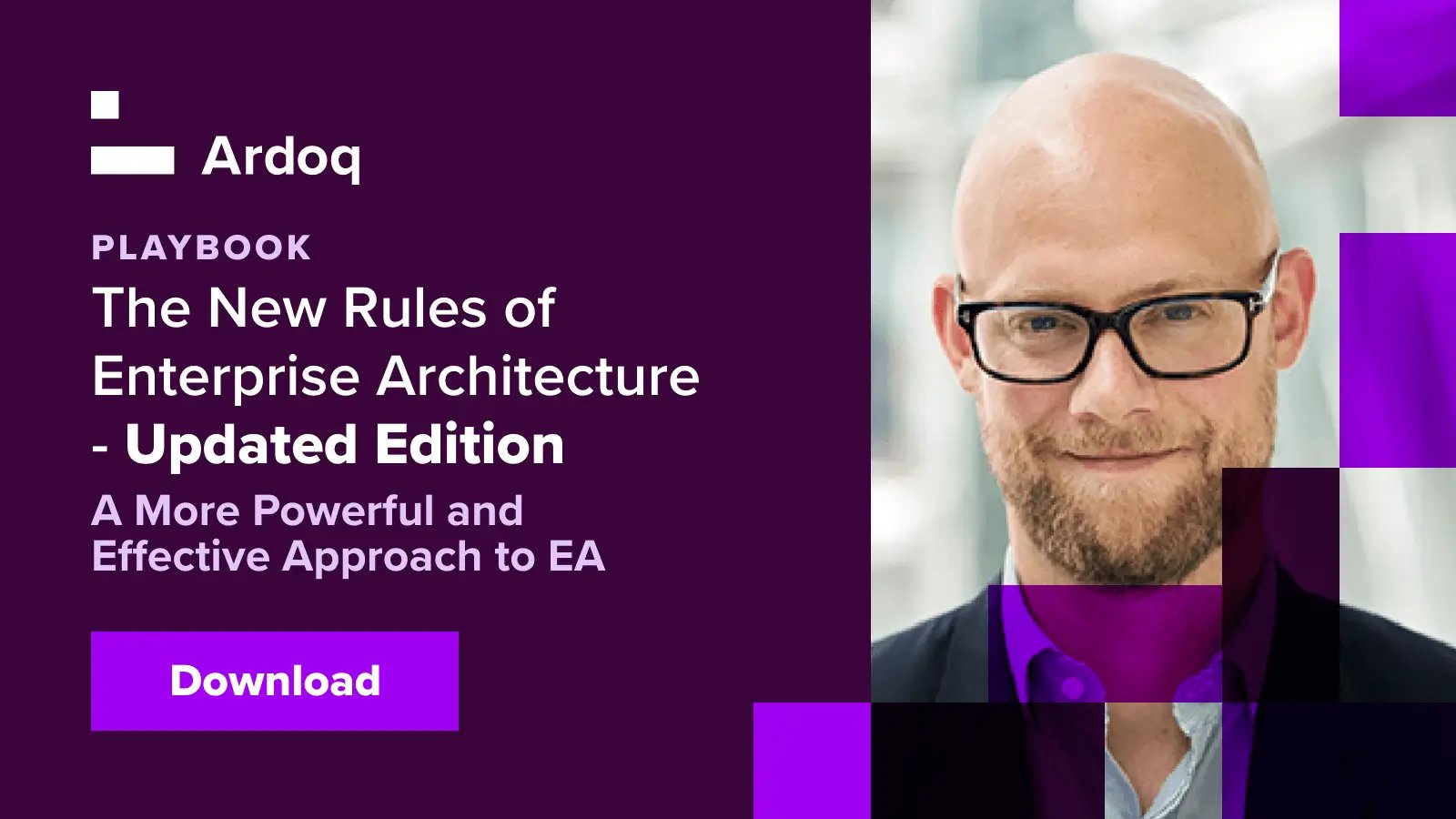This article was originally written in 2019 by Co-Founder Magnus Valmot.
I spent the first half of my career as a management consultant, working with clients to help them solve common business challenges related to organization, optimization, and change. Then I left management consulting to help build technology companies. So where does Ardoq fit into this?
Why the change? I changed tracks because I realized the answer to so many of the day-in, day-out problems I encountered wasn’t better practices or better processes, but better software.
This is what I encountered.
Time equals money, but not always value
Most consultancies have built their business by selling hours. So if consulting hours have value, do they automatically align with the value the client receives? Do more hours billed mean more value received?
In my experience, rarely. What are the incentives for consultants to fix long-term problems once and for all?
With the rapid development happening across the tech scene, you would expect your consultants to proactively suggest fit-for-purpose solutions that help drive meaningful efficiencies for your organization. Anything else can undermine their value.
The danger for consultants is that changing the approach could help make you less dependent on them going forward. Perhaps it’s might not appear as ideal for the consultant at a first glance – but it should produce a better outcome for your organization. At the end of the day, the consultant that provides you with the highest value is the consultant you will go back to, again and again.
Change is constant, but projects are finite
We often hear that the only real constant in business is change. And, that’s true. But, too often, as we navigate that change, projects are created to achieve one specific goal – like making a process improvement within a particular department. It’s better to view each project as a way to lay a foundation for continuous organizational change. Otherwise, you might create a long list of actions or behaviors that don’t add much value.
Consider the process of analyzing your organization for business processes that could be improved. At Ardoq we call it business capability mapping. If you had to do this the traditional way, you might start by sorting through a batch of old PDFs, presentations, and Visio diagrams and then conduct interviews with a few key stakeholders across the company. The end result would usually be another PowerPoint presentation designed to help you communicate the main ideas.
Now, I’m probably a bigger PowerPoint fan than most, but even I must admit that creating another .PPT file doesn’t help lay the foundation for future improvements. The document probably won’t be used much outside the current project. And let’s face it, it’s a cumbersome format that does not support continuous improvement.
Even if there was a handover of raw data – like interview notes – in this manual mapping process, the client would rarely have the bandwidth to process it for reuse. This has big implications: Not only is the value from this content limiting the next initiative, it also makes it harder to understand dependencies between current initiatives. The lack of an open format means your current-state mapping has become yet another knowledge silo that will require more resources to break open and mine – perhaps by the next team of consultants?
So, in the end, after the consultants have packed up, and responsibility for implementing recommendations has reverted back to the client team, that PowerPoint deck often becomes an expensive and unloved piece of shelfware. Once those consultants walk out of the door, a significant amount of intelligence and expertise goes with them.
That monster PowerPoint deck is also a poor tool for creating stakeholder buy-in. Sending an email with a 70-slide .pdf attachment will rarely get you any level of support. It’s not dynamic, it’s not personal, and it’s often hard to draw a line between the breadth of observations and the final recommendations. It’s 70 slides long, for heaven’s sake!
Even if your audience disagrees with a recommendation you’ve presented, it may seem like an overwhelming task for them to trawl through it and help improve the flaws in your argument. You’ve overwhelmed their bandwidth and buried them in legalese. A presentation like that tends to disengage your audience from the process and undermine the impact of your primary recommendations.
Is there a better way?
I won’t claim expertise in all of these challenges. But I’ve seen clear evidence that there is a better way to do many of these things. And, it’s part of what brought me to Ardoq.
A graph-based collaboration platform is a key tool to help companies break this unproductive cycle. It enables you to develop true organizational memory. Once implemented and used widely, a graph-based collaboration platform can track how your organization runs and changes. It can generate and track data on your products, processes, and people – which can then in turn lead to deeper insights that help your business improve.
It’s a fundamental question, and one that cuts to the heart of how organizations run projects: Why do I need to spend time discovering and understanding the organization’s moving parts at the start of each project? Shouldn’t that knowledge just be there? If change is constant, then the organization’s requirement to understand itself must be too.
This need to preserve the corporate memory drives specific requirements for any technology capable of meeting that challenge. And it’s one that the founders of Ardoq were well aware of.
Select technology that enables continuous improvement
Firstly, all enterprise mapping needs to be done in a data-driven format, where the bits and pieces of your processes, technologies, and people can be connected to a single source of truth. I believe the Ardoq Enterprise Intelligence Graph is the best – perhaps the only – way to go about managing this level of complexity.
Secondly, ensuring a relevant and relatable overview of your enterprise demands a flexible platform, so you can leverage the structures and vocabulary your business users will understand. Rigid, specialized meta-models are great for academics, but rarely deliver in the day-to-day reality of business.
Thirdly, it’s advisable to crowd-source your data input in a seamless and streamlined way. Because change is constant, you can't have consultants doing 1:1 interviews across your organization continuously. The goal is to build on previous accomplishments and reduce or eliminate the amount of manual work that must be repeated.
Finally, your efforts must deliver an output from which insights and understanding can be accessed and understood seamlessly across all parts of your business. For instance, you wouldn’t want the details of how business and IT interact to be left to a small and specialized enterprise architecture (EA) team. To make better, smarter and faster decisions those insights must proliferate across the whole organization.
These are some of the founding insights Ardoq was built on. It’s no exaggeration to say it’s why I – and the rest of my team – are here.
These observations have been collected over many years of experience across a broad range of projects and with several different consultant teams.
I'd love to hear your own thoughts and experiences in these areas. Feel free drop us a line on our Linkedin page.
 Ardoq
This article is written by Ardoq as it has multiple contributors, including subject matter experts.
Ardoq
This article is written by Ardoq as it has multiple contributors, including subject matter experts.




/Logos/Ardoq/RGB_Ardoq_Logo_Stacked_White_Monochrome%201.png?width=80&height=77&name=RGB_Ardoq_Logo_Stacked_White_Monochrome%201.png)


